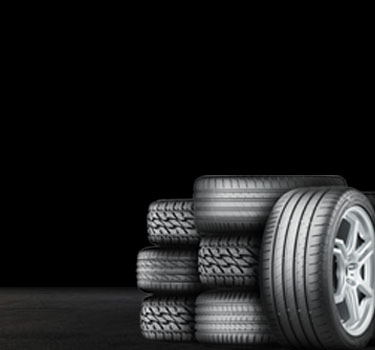Do you know how your tyres are made, or what happens to them after use?
Read on below to learn about the lifecycle of a tyre, from factory, to store, to your car and beyond.
How tyres are made
The manufacturing journey of a tyre starts in a factory, where individual materials are combined to make the many components of a tyre, and then assembled and cured to create the finished product.
Mixing:
The first step in the creation of a tyre is the mixing process, where up to 30 different kinds of ingredients are combined to create a thick black compound. Materials mixed can include natural rubber, which is sourced from rubber trees in plantations, synthetic rubber, carbon black, sulfer and other chemical agents. The resulting rubber is formed into sheet strips for the next stage of mixing.
Extruding:
This rubber is mixed further, heated and then extruded and cut into lengths forming tread and sidewalls.
Carcass Construction:
Fabric is weaved into cords, coated with rubber and cut to lengths forming the carcass ply material.
Steel Belt Production:
Individual steel cord filaments are wound together, coated with rubber and cut to lengths forming the steel belts.
Bead Manufacture:
Individual steel cord filaments are wound in a circle and coated with rubber forming the beads.
Building:
The tyre components, comprising of the rubber tread and sidewalls, steel belts, carcass ply and beads are assembled on an automated machine. The end result is a “green tyre,” that does not yet have the grooved pattern of tread.
Curing:
All components are vulcanised together in a mould, which shapes the ‘green tyre’ into its final state, creating the sidewall markings and tread pattern.
Inspecting:
The last step in the tyre manufacturing process is the careful inspection of the tyre, both by trained inspectors and specialised machines, to ensure the tyres are free of faults and ready to go on the road.
We source our tyres from a variety of factories internationally, for our network of stores around New Zealand.
Your tyres in action
The next stage in a tyre’s lifecycle is the time it spends on your car. To get the most value from your tyres, it’s important you look after them. Tyres that aren’t maintained will wear more rapidly, cause the vehicle to expend more fuel, and can compromise your vehicle’s braking and handling characteristics. Regular maintenance will make sure your tyres are safe to drive for longer, and save you additional trouble down the line.
Follow these maintenance tips here to get the best life out of your tyres.
After you’re done with your tyres
When your tyres are too worn out or damaged to continue on the road, then they reach the next stage in their lifecycle. If you’re wondering where to get rid of old tyres, you can bring them into one of our Bridgestone stores or find your nearest public drop off point here.
Learn more about your tyres here.
Let's find tyres to suit you
-
Search by size
-
Search by rego
Vehicle data is provided by DriveRight, tyre sizes are a guide only. Tyre sizes can vary, even on similar vehicles.
We recommend you inspect and check your tyre size. Learn how here.



